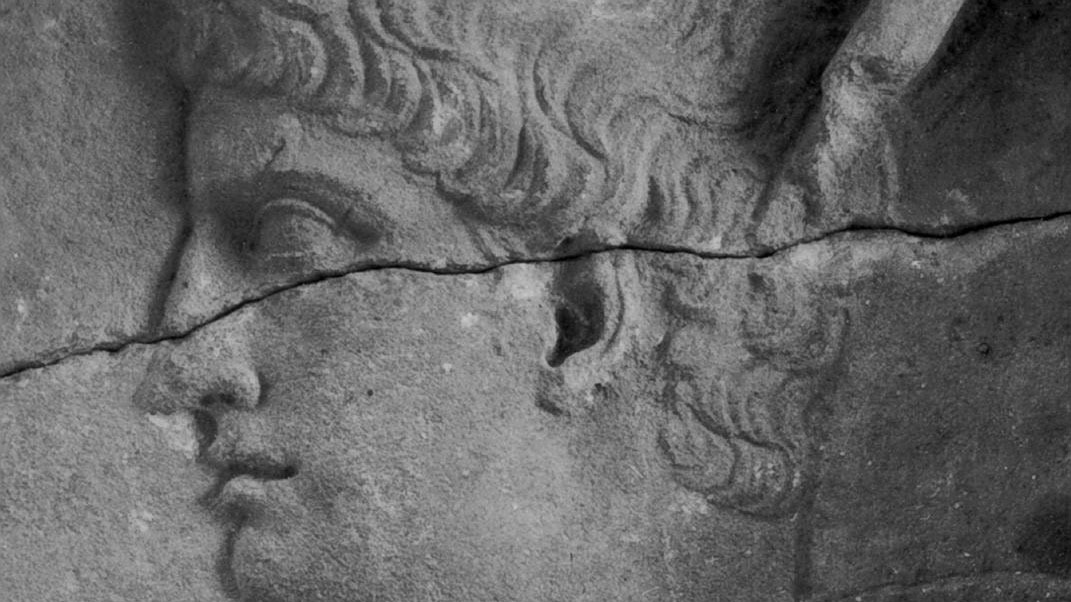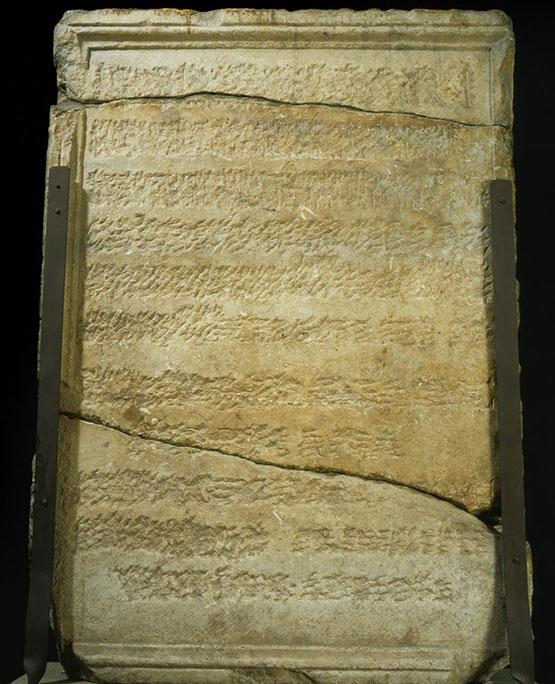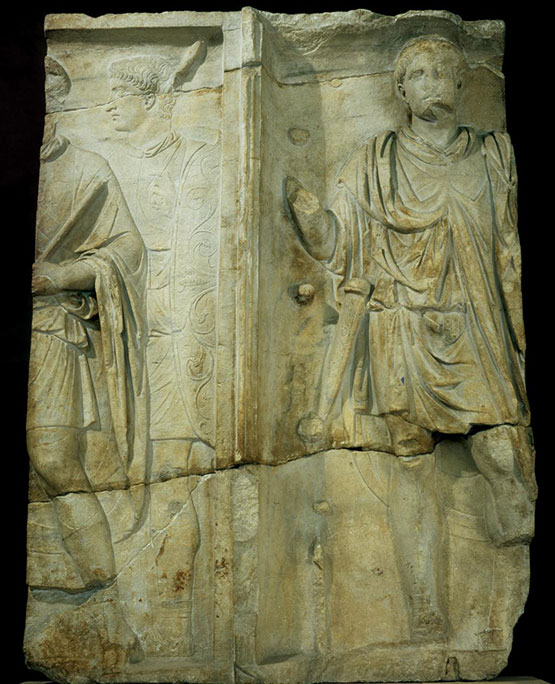The Puteoli Marble Block
On Display - Rome Gallery

To the Imperator Caesar Domitian Augustus Germanicus, son of the deified Vespasian, high priest, in the fifteenth year of his tribunician power, imperator for the twenty-second time, consul for the seventeenth time, perpetual censor, father of the country, the Flavian Augustan Colony of Putoli [dedicates this] having been moved closer to his city by the indulgence of the very great and divine leader.
A marble block over five feet in height that originally formed part of a monumental statue of the Emperor Domitian, who ruled between 81 and 96 AD (or CE). The monument was dedicated to him by the town of Pozzuoli, located near Naples, Italy, and it may have been set up to thank the Emperor for his help with new road construction. One side was covered by an eleven-line inscription that listed Domitian's titles, including tribune, consul, censor, and father of his country. These titles, which were standard flattery, did not in any way describe the true character of the Emperor — an autocratic ruler who consistently stripped the Senate of its decision- making powers.
After his assassination in 96 AD, the Senate ordered the defacement of all monuments that had been set up to honor him, including this one. This meant that one of the town's workmen would have set up scaffolding around the base, climbed to the top, and then hammered out each letter of the inscription. Some letters are completely obliterated, and some are only partly erased, so you can see where and how often his hand was getting tired. In spite of the destruction, the original inscription can be completely restored based on other inscriptions of Domitian, coupled with the letters that still survive.
A few years after the destruction, the town decided to reuse the stone to honor the Emperor Trajan, who ruled between 98 and 117 A.D. The Romans were always reluctant to waste a perfectly good piece of marble if it could be recycled for another commemoration. If you walk to the other side of the monument, you'll see that they carved what had been the back into a new relief, which would have concealed the original defaced inscription.
Expedition - Domitian's Rule
There have been many tyrants throughout history. Among them, Roman Emperor Domitian, whose reign ended when he was assassinated in 96 A.D. In this edition of Expedition, Dr. Brian Rose tells us about Domitian's time as ruler and how, after his death, the Roman Empire attempted to erase him from history.
Inscription / Translation (Side A)
Relief Panel (Side B)


Online Resources
Expedition Magazine
Websites
Misc. Articles
American Sign Language Video

